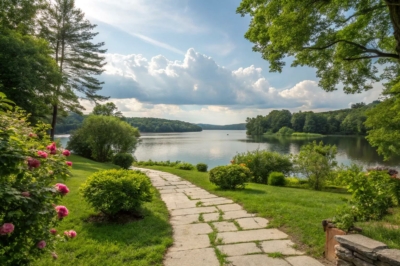1. Mixed Textures
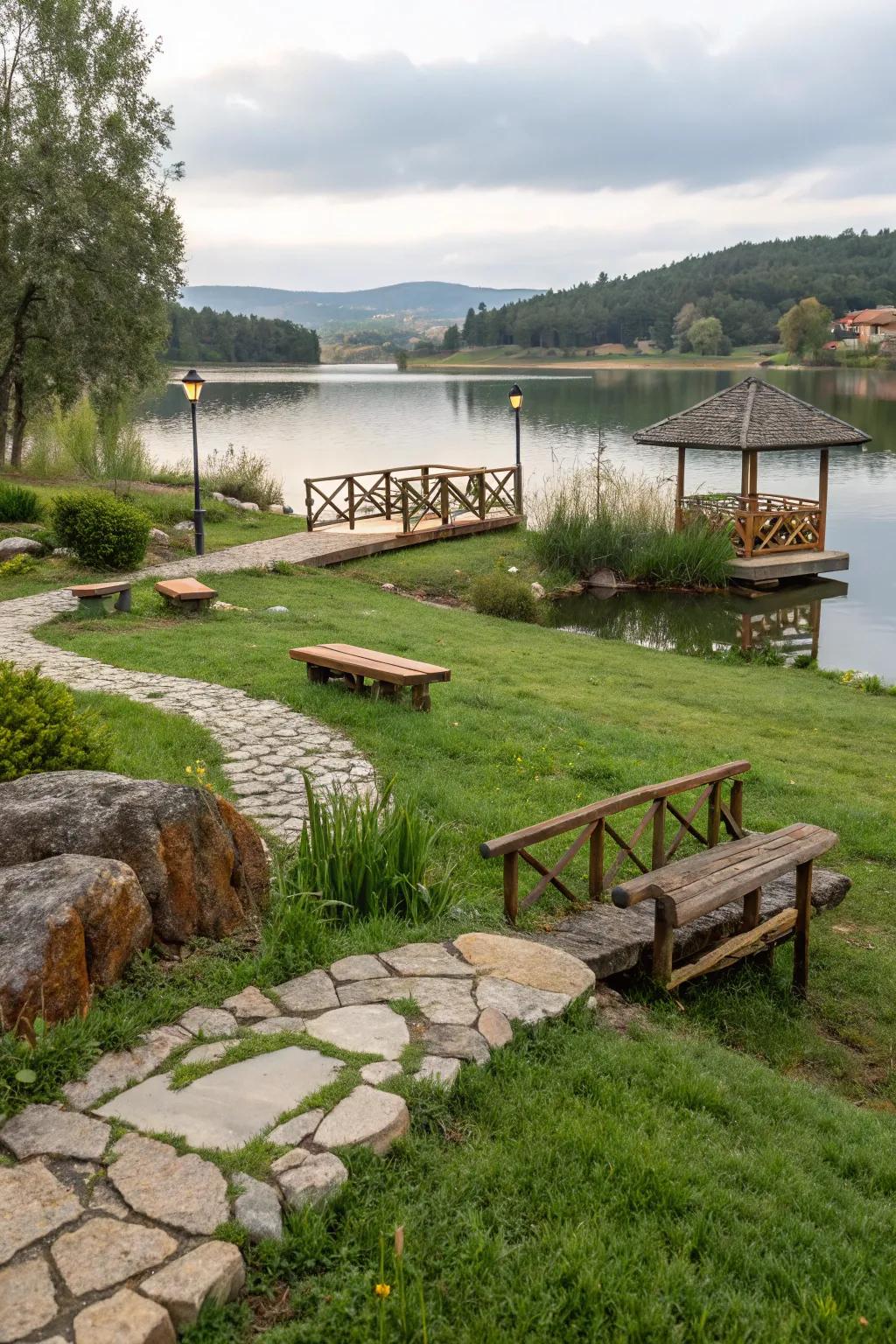
Combine different textures like grass, stone, and wood for a dynamic and visually interesting landscape. The interplay of materials always adds depth and excitement to a garden.
A few things you might like:
- Natural Stone Pavers: Enhance your path with natural stone pavers, adding rustic charm and durability to your garden.
- Wooden Garden Bench: Invite rest and relaxation with a wooden bench, perfect for complementing lush greenery and stone.
- Landscape Grass Seed Mix: Create a plush, green backdrop with this grass seed mix, bringing life and color to your landscape.
2. Shoreline Mulching
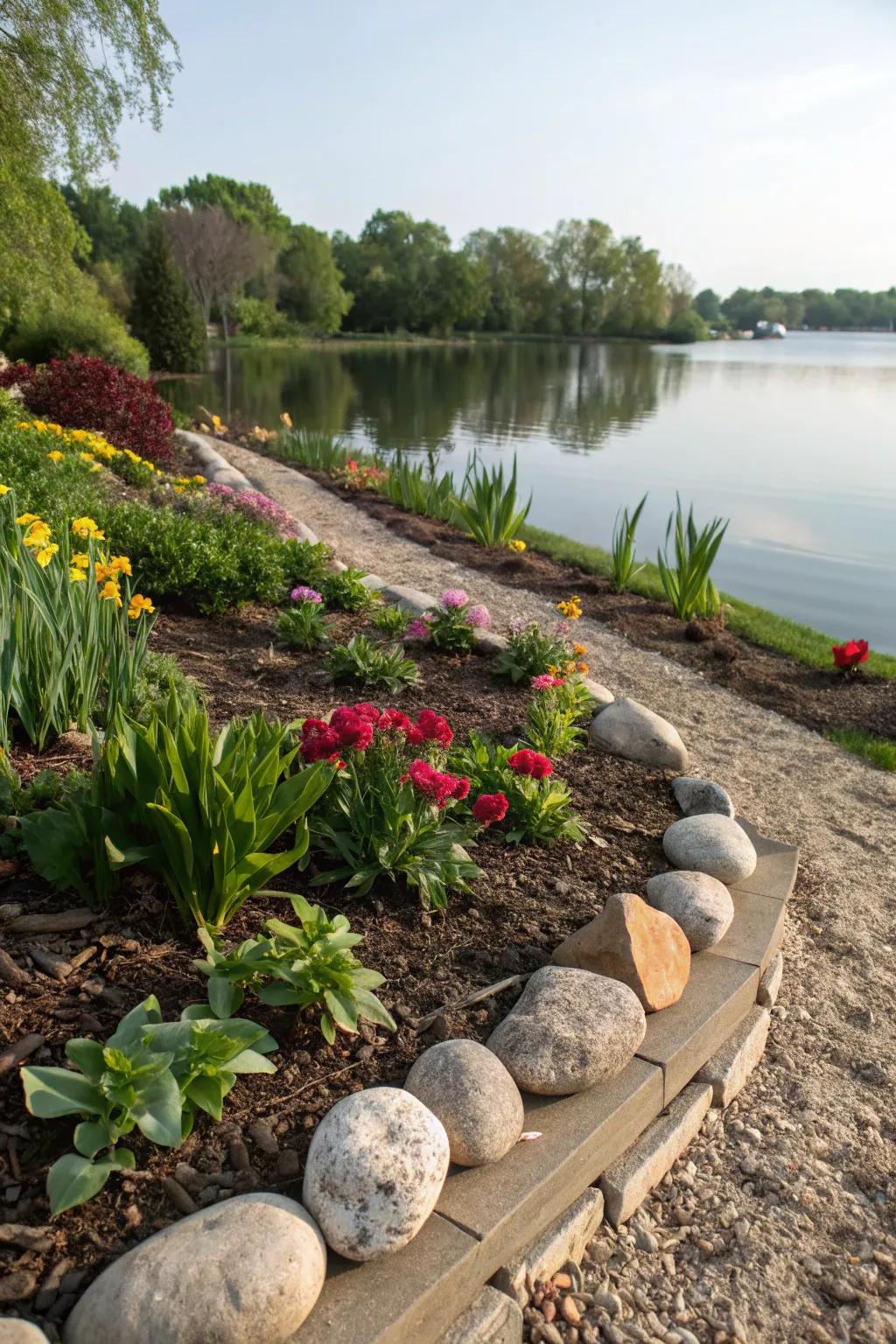
Use natural stone or gravel mulch for a polished look that also conserves moisture. I’ve found this to be an effective way to keep gardens healthy and low-maintenance.
Useful items to consider:
- Decorative River Rocks: Enhance your landscape’s appeal with river rocks for moisture retention and a clean finish.
- Pea Gravel for Landscaping: Create a polished garden look with pea gravel, ideal for low-maintenance moisture conservation.
- Natural Stone Mulch: Opt for natural stone mulch to maintain garden health and aesthetics effortlessly.
3. Lush Vegetation
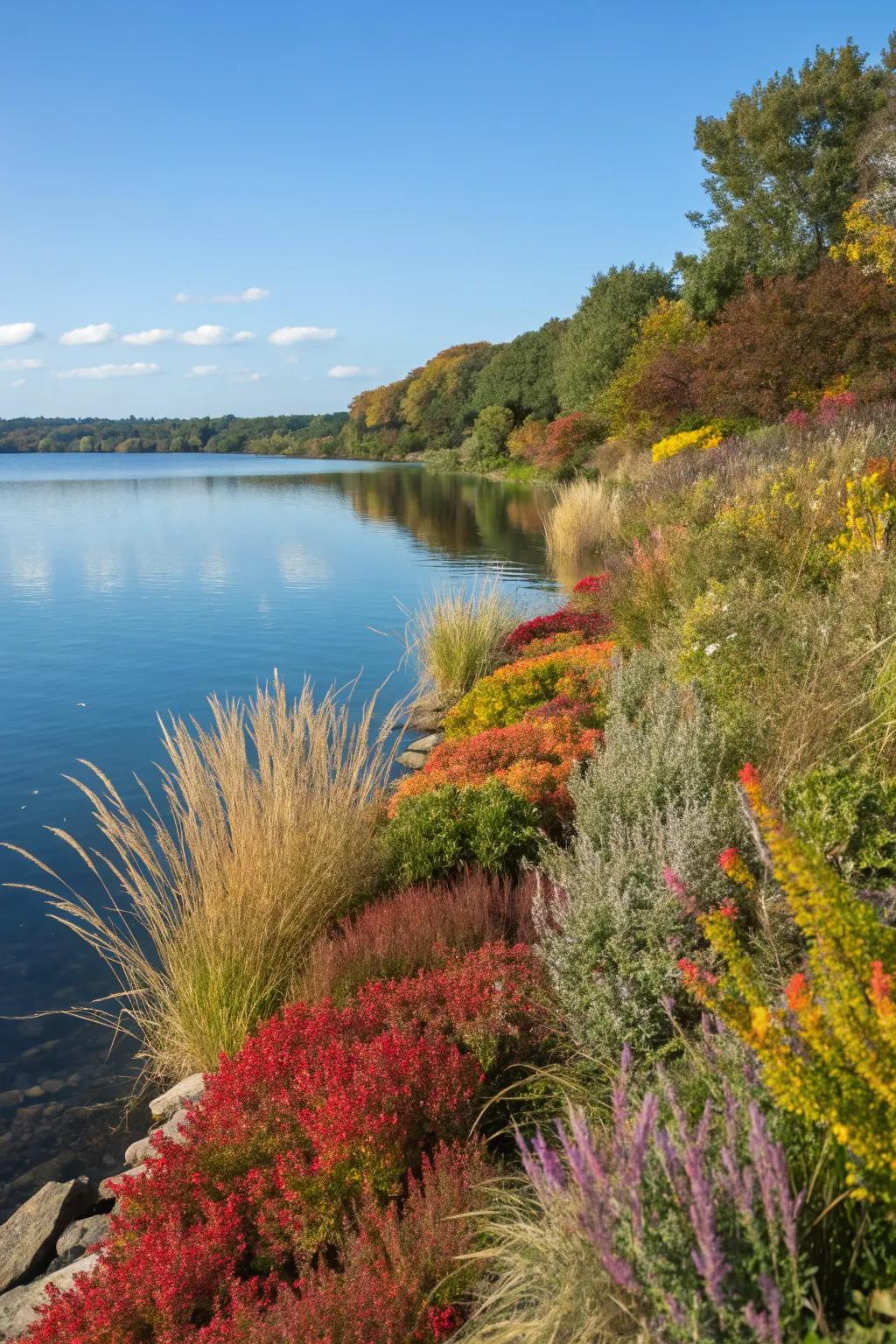
Incorporating a variety of shrubs, ornamental grasses, and flowering plants brings life and color to the lakeside. My garden’s lush greenery always feels like a warm embrace from nature.
A few choices to try:
- Perennial Flowering Plant Seeds Mix: Enhance your lakeside with vibrant perennial flowers; a hassle-free way to add color.
- Ornamental Grass Seed Pack: Add texture with ornamental grasses; perfect for creating a dynamic and elegant shoreline.
- Shrub and Bush Seedlings: Introduce lush greenery with hardy shrubs; ideal for a structured yet natural lakeside view.
4. Seasonal Planting
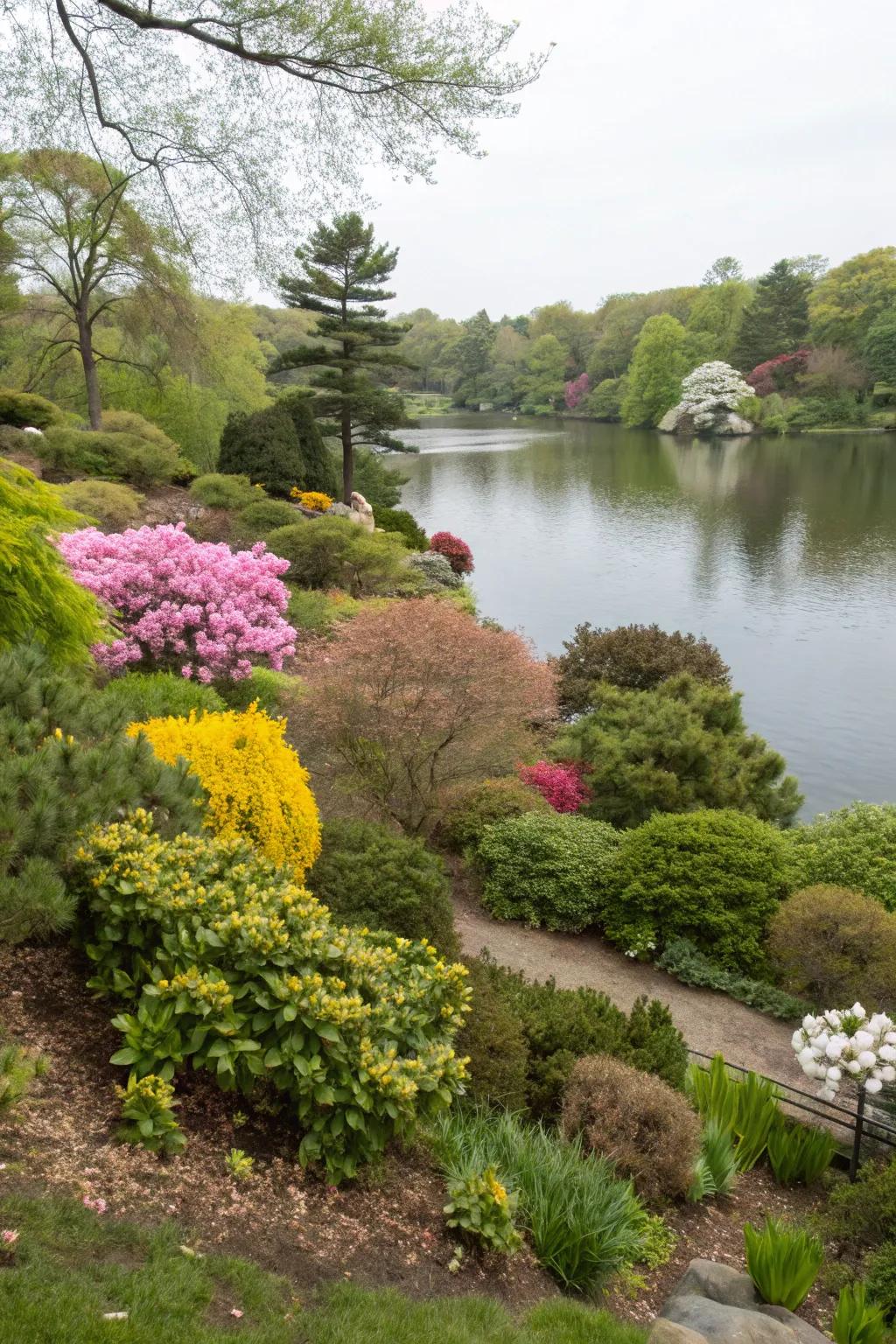
Plan for seasonal variations to ensure your landscape thrives year-round. I’ve seen the beauty of a garden that evolves beautifully with each season.
Check these products out:
- Perennial Flower Bulb Collection: Add vibrant color year-round with perennial bulbs that bloom in successive seasons.
- Seasonal Garden Planner: Plan and organize your planting schedule with this easy-to-use seasonal garden planner.
- Garden Soil pH Test Kit: Ensure optimal growth by testing and adjusting the soil pH with this user-friendly kit.
5. Rain Gardens
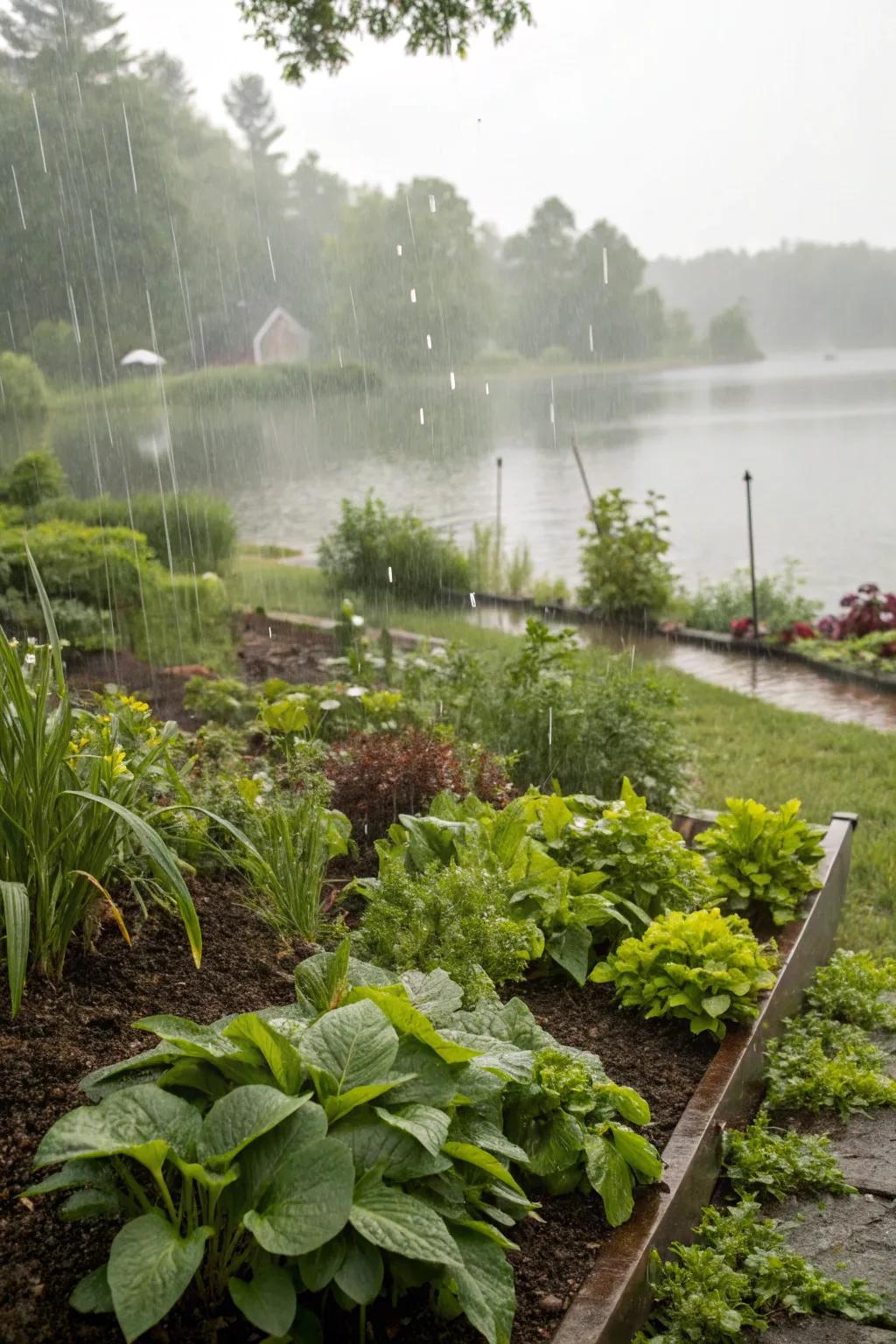
Install a rain garden to catch runoff and filter water naturally. I’ve seen these gardens not only improve water quality but also add beauty and biodiversity.
These products might be useful:
- Native Rain Garden Plants: Enhance your garden with native plants that boost biodiversity and filter water naturally.
- Water-Permeable Mulch: Use water-permeable mulch to improve soil moisture retention and support plant growth.
- Rain Garden Soil Mix: Optimize your rain garden with specialized soil mix for better drainage and plant health.
6. Natural Stone Features
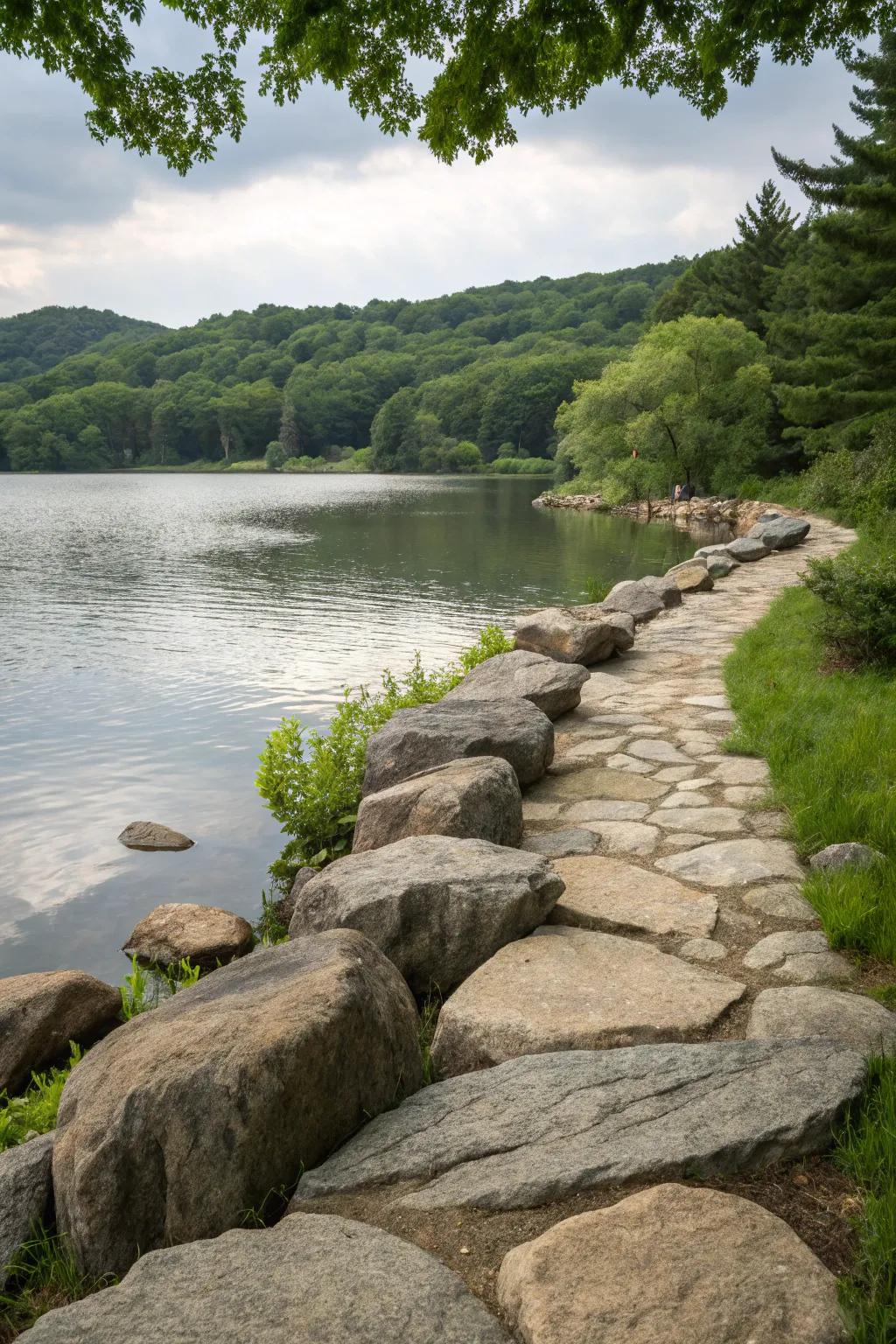
Adding large rocks and boulders can craft a natural-looking barrier while enhancing the scenic beauty of your shoreline. I’ve found that integrating stones creates a timeless, rugged charm that perfectly contrasts with the soft water.
Consider these options:
- Decorative Landscape Boulders: Transform your shoreline with these stunning boulders, adding natural beauty and stability.
- Natural Stepping Stones: Enhance your path with rustic stepping stones, ensuring durability and visual appeal.
- Stone Edging Kit: Create defined edges along your shoreline with this easy-to-install stone edging kit.
7. Eco-Friendly Lawns
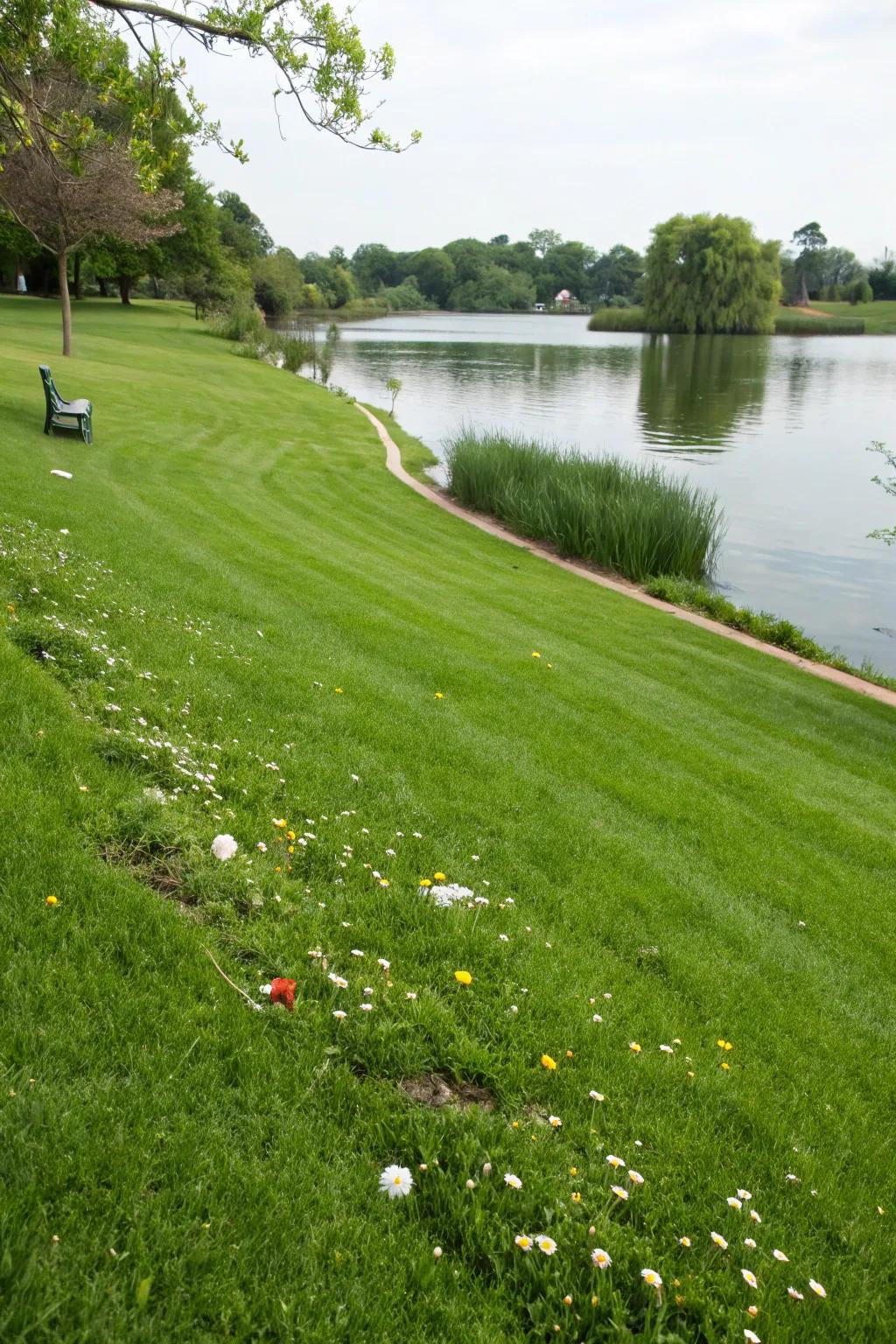
Switch to eco-friendly lawn care methods to protect the lake’s ecosystem. I’ve found that natural solutions keep lawns healthy and vibrant without harming the water.
Check if these fit your needs:
- Organic Lawn Fertilizer: Enhance lawn health naturally and protect the lake with eco-friendly organic fertilizer.
- Electric Lawn Mower: Switch to an electric mower for quiet, pollution-free lawn care by the lakeside.
- Native Grass Seed Mix: Plant native seeds to promote biodiversity and reduce chemical use by the waterside.
8. Shoreline Containers
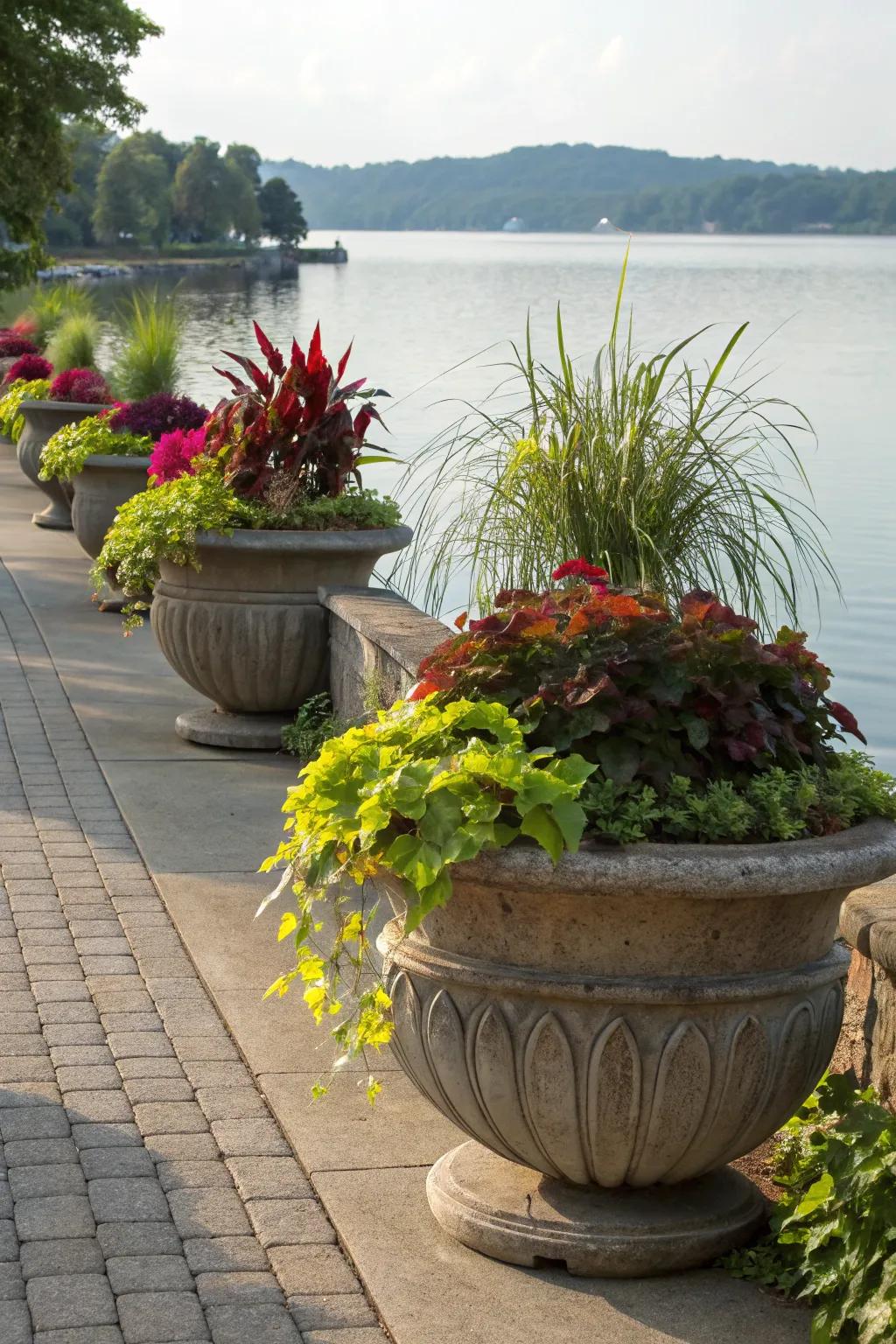
Use large containers for planting if the soil is too rocky. I love how containers can add structure and versatility to any landscape.
A few suggestions:
- Large Outdoor Planters: Enhance your landscape with versatile, durable containers suitable for rocky terrains by the shore.
- Self-Watering Planter Pots: Simplify maintenance with self-watering pots that ensure consistent moisture for your shoreline plants.
- Decorative Garden Urns: Add elegance and structure to any lakeside garden with these ornamental garden urns.
9. Hardscaping with a View
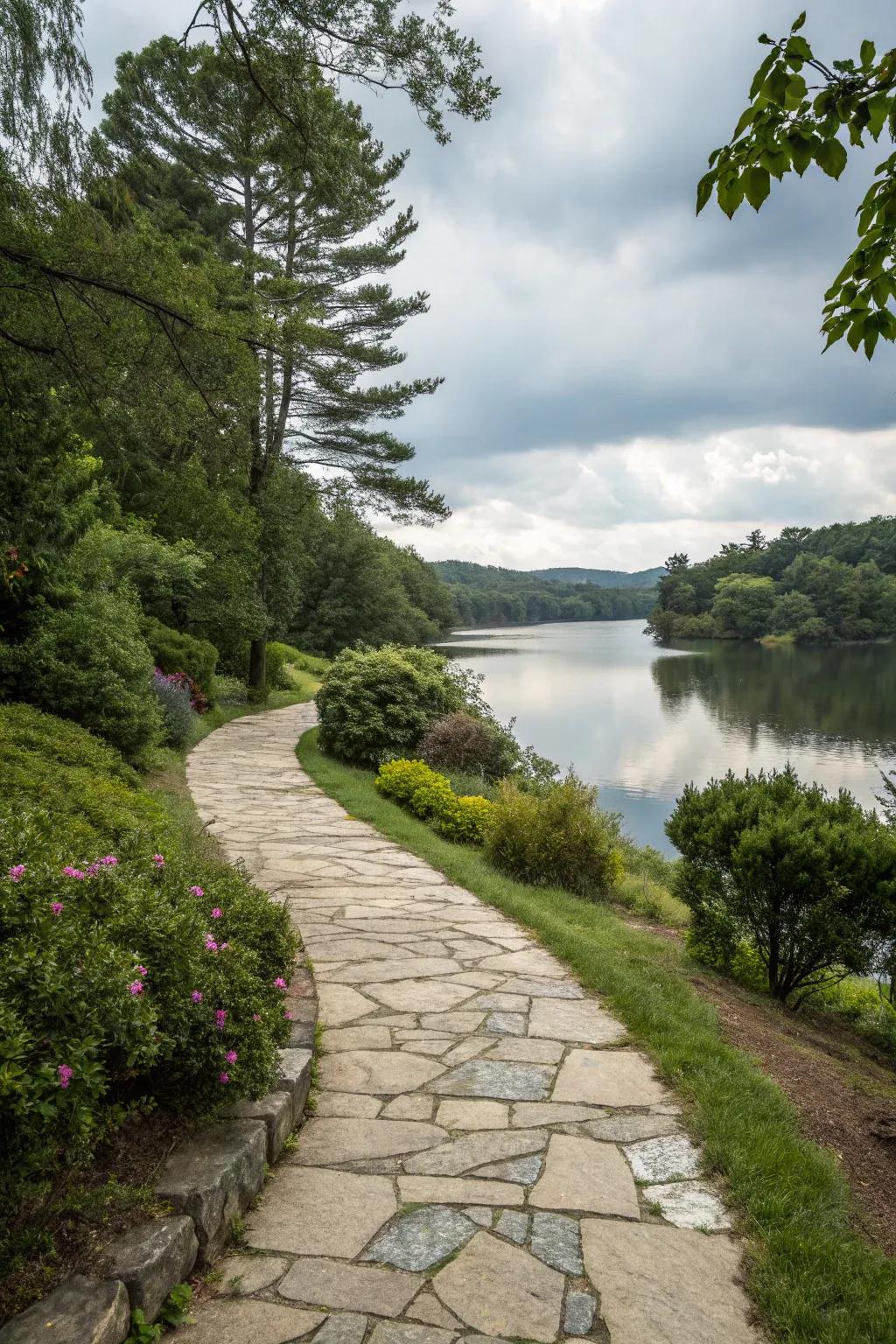
Incorporate stone or gravel pathways that guide the eye and feet elegantly to the water. These paths have always added charm and functionality to my designs.
Maybe worth checking out:
- Natural Stone Pavers: Enhance your pathway with natural stone pavers, creating a rustic and timeless look.
- Gravel Landscaping Stones: Choose gravel landscaping stones for a flexible, easy-to-maintain pathway leading to the water.
- Garden Edging Stones: Define your pathway with attractive garden edging stones for a neat and finished appearance.
10. Water Access
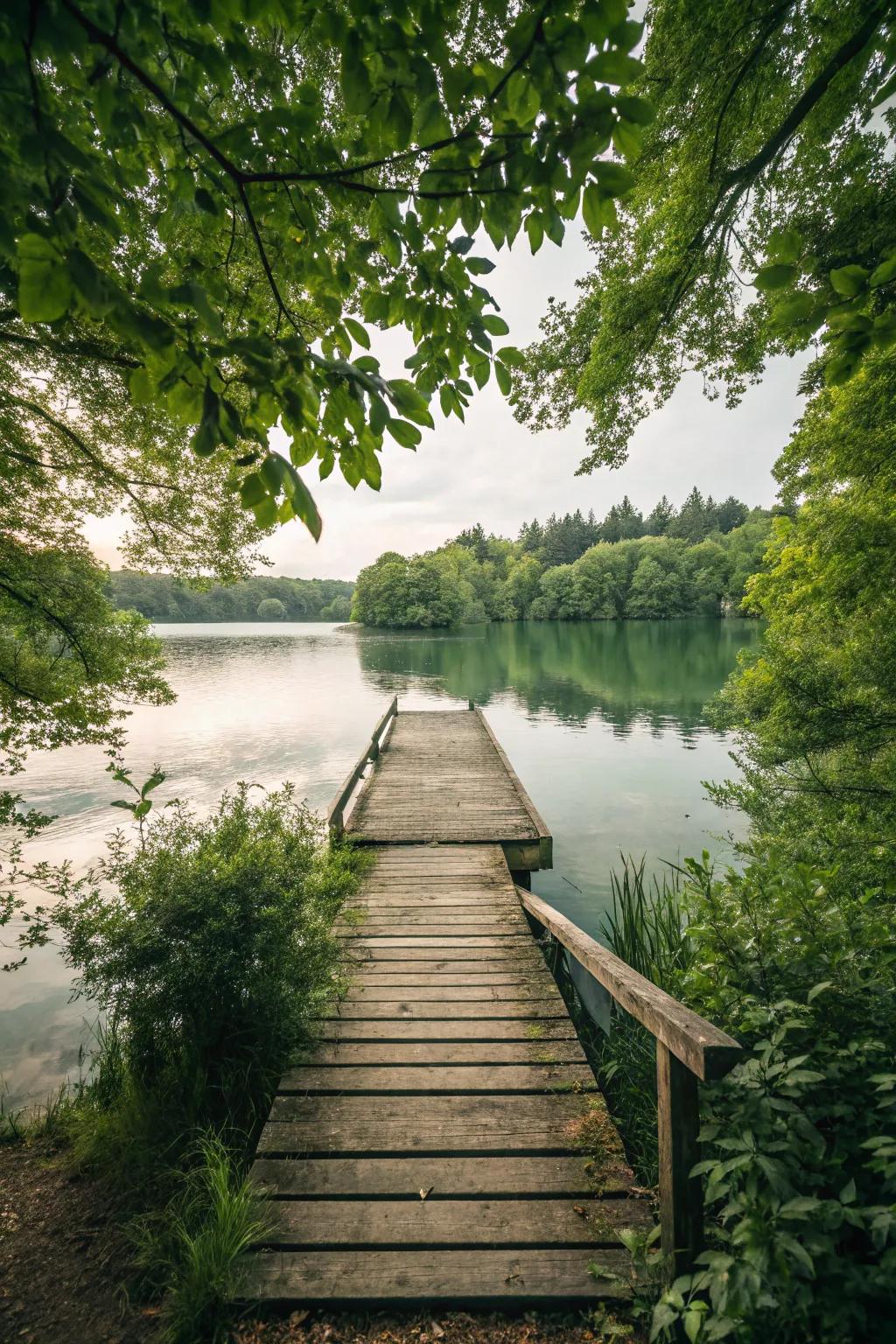
Build a charming dock or pathway leading to the water to enhance accessibility and enjoyment. In my own projects, pathways always invite a sense of adventure and exploration.
Explore these options:
- Modular Dock Kits: Create a personal haven with modular dock kits, ensuring easy water access and enjoyment.
- Garden Pathway Lights: Illuminate your pathway with garden lights for safe, enchanting evening strolls by the water.
- Non-Slip Decking Strips: Enhance safety on your dock or path with durable, non-slip decking strips.
11. Private Nooks
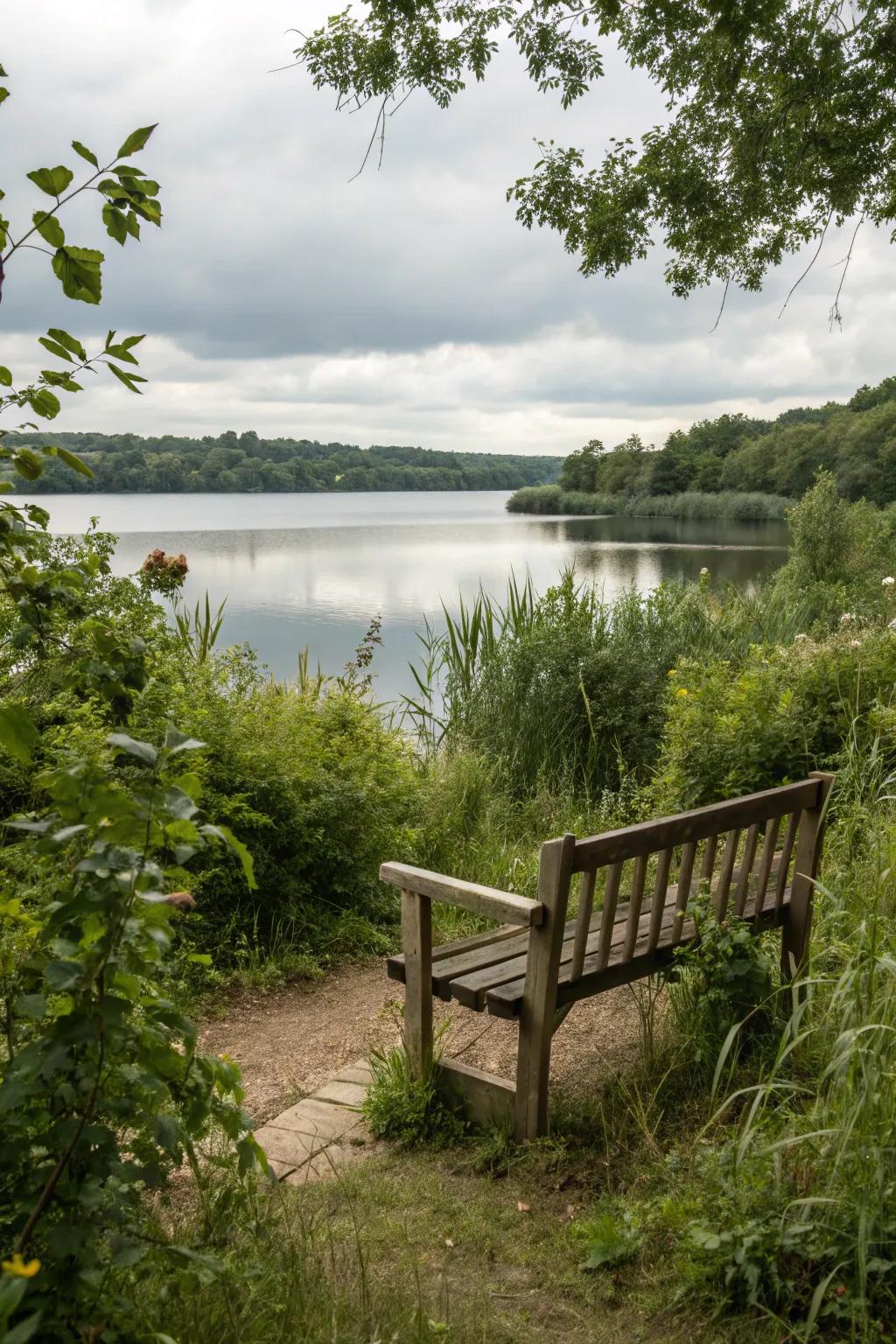
Create intimate nooks with plant screens for solitude and reflection. These cozy corners have become my favorite spots for a quiet moment by the water.
Possibly handy products:
- Outdoor Privacy Screen: Create a secluded nook by the lake with easy-to-install outdoor privacy screens.
- Garden Bench: Relax in comfort while enjoying the views with a durable, weather-resistant garden bench.
- Tall Ornamental Grass: Enhance privacy naturally with tall ornamental grasses ideal for lake shore landscapes.
12. Colorful Plantings
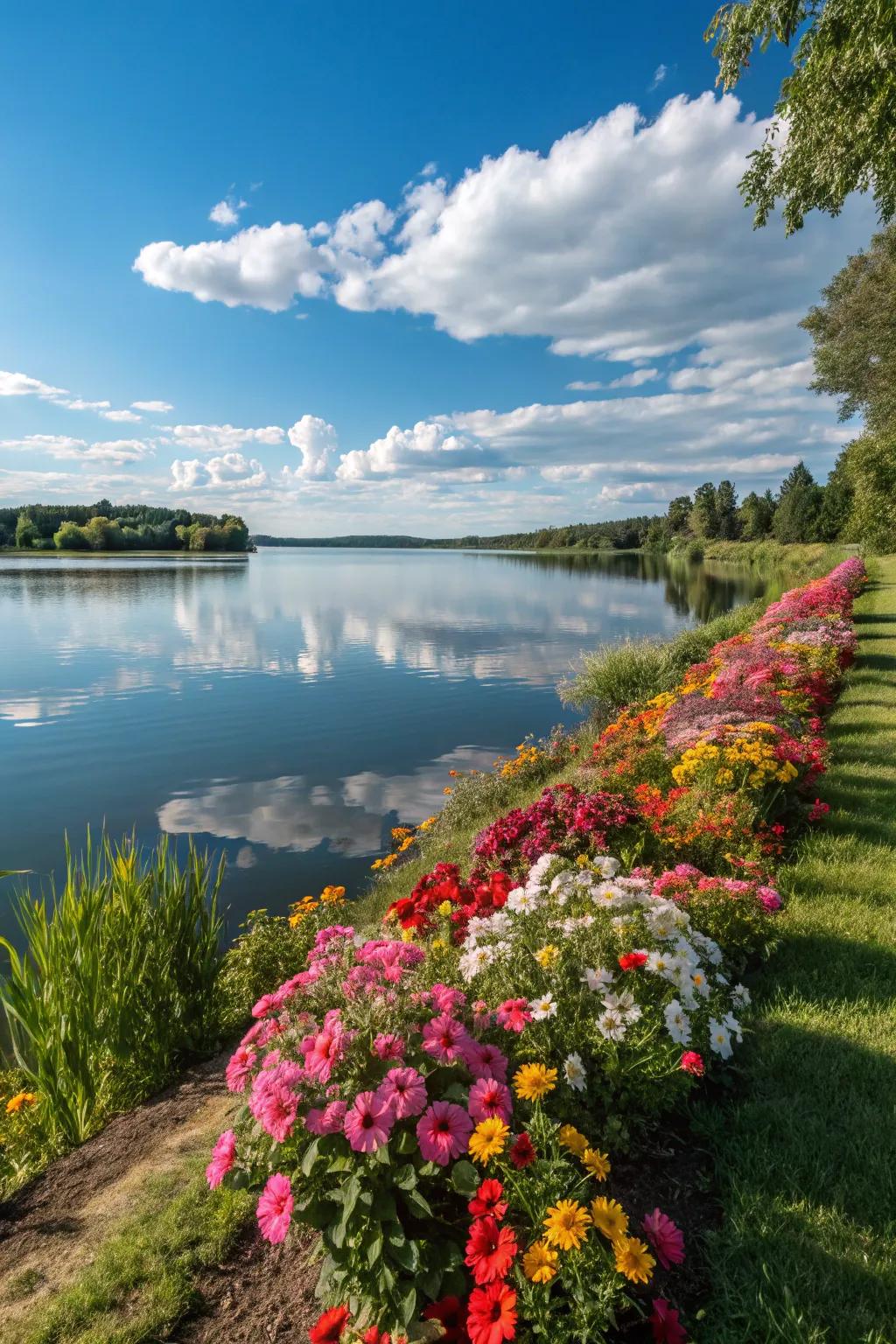
Brighten your shoreline with colorful flowers and plants that add vibrant accents. In my experience, a splash of color can transform a dull space into a lively garden.
You might give these a try:
- Perennial Flower Seed Mix: Transform your shoreline with vibrant perennials that bloom year after year, adding lasting beauty.
- Garden Plant Markers: Keep your colorful plantings organized with stylish markers, adding both utility and charm.
- Organic Fertilizer for Flowering Plants: Boost your garden’s color with organic fertilizer, promoting vibrant blossoms and healthy growth.
13. Environmental Integration
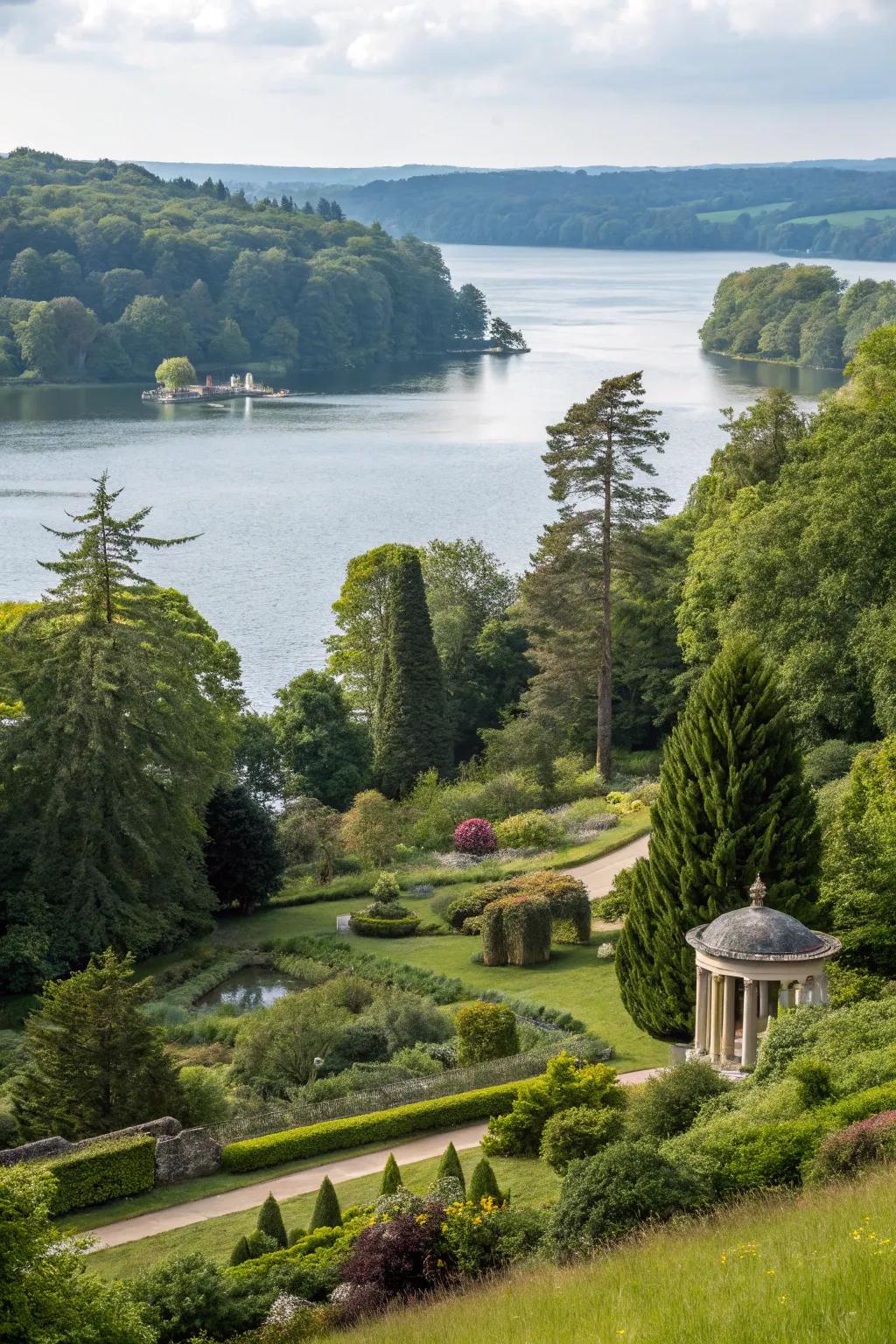
Ensure your landscaping blends seamlessly with the natural environment for a harmonious look. I always aim for designs that feel like a natural extension of the landscape.
Some handy options:
- Native Wildflower Seed Mix: Plant native wildflowers to enhance natural beauty and support local wildlife near your lakeside.
- Stone Garden Bench: Add a rustic stone bench for a perfect lakeside relaxation spot that blends with nature.
- Solar-Powered Garden Lights: Use solar lights to illuminate paths without disrupting the natural environment around the lake.
14. Outdoor Seating
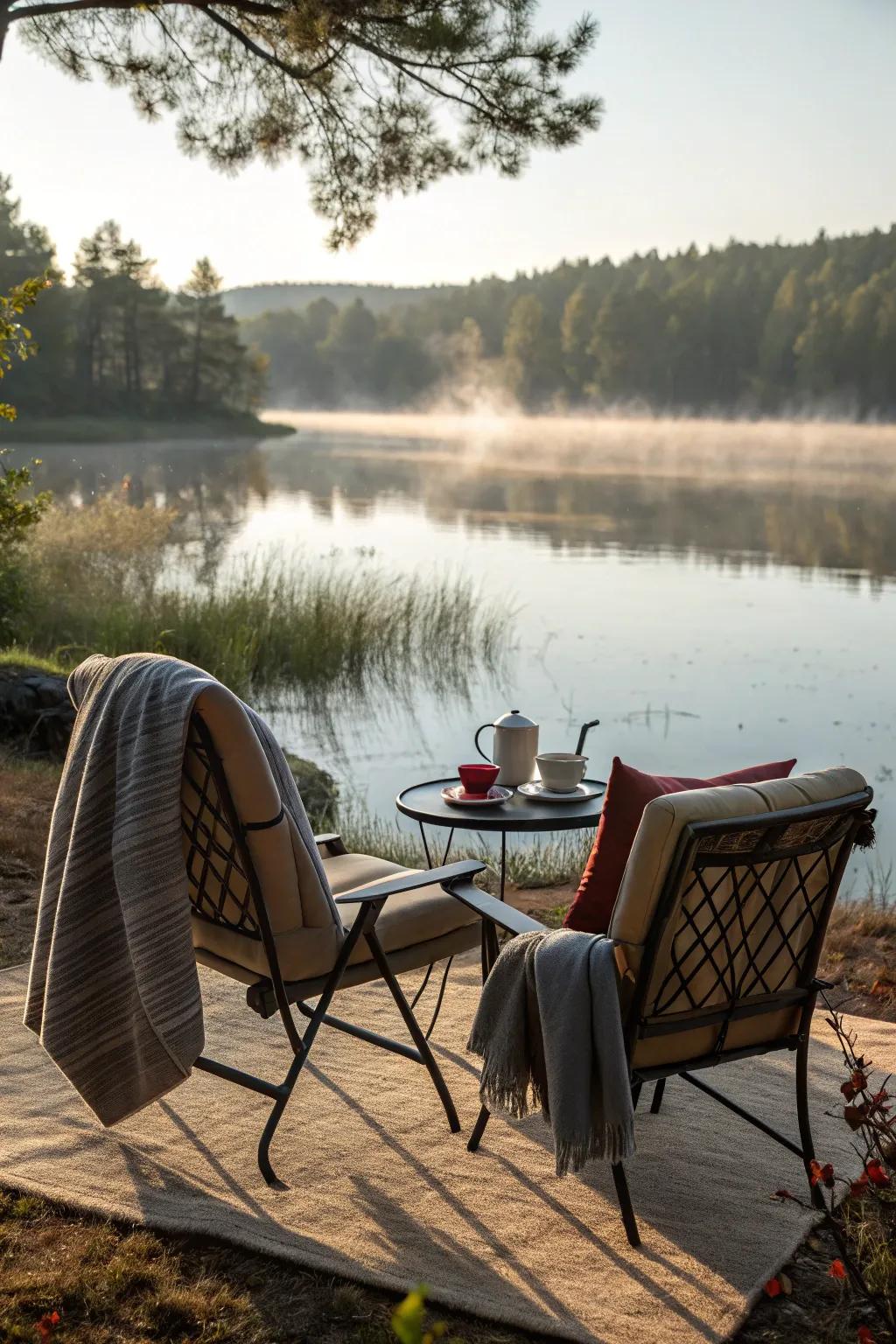
Design comfortable seating areas overlooking the lake for ultimate relaxation. There’s nothing like enjoying a sunset from a cozy bench by the water.
You might like:
- Outdoor Patio Bistro Set: Transform your lake view with this elegant bistro set for perfect morning coffee moments.
- Weather-Resistant Outdoor Cushions: Enhance comfort with durable, cozy cushions ideal for lakefront relaxation any time of year.
- Portable Outdoor Rug: Add warmth and style to your seating area with this easy-care, portable outdoor rug.
15. Floating Docks

Install a floating dock for flexible water access that adapts to changing water levels. Having a floating dock in my projects has made water activities more accessible and fun.
Items that may come in handy:
- Modular Floating Dock Sections: Craft your ideal dock layout easily with modular sections for optimal water access flexibility.
- Floating Dock Ladder: Enhance safety and convenience with a robust dock ladder designed for easy water access.
- Dock Mooring Cleats: Secure your boats effortlessly with sturdy mooring cleats for peace of mind and reliability.
16. Wildflower Walks
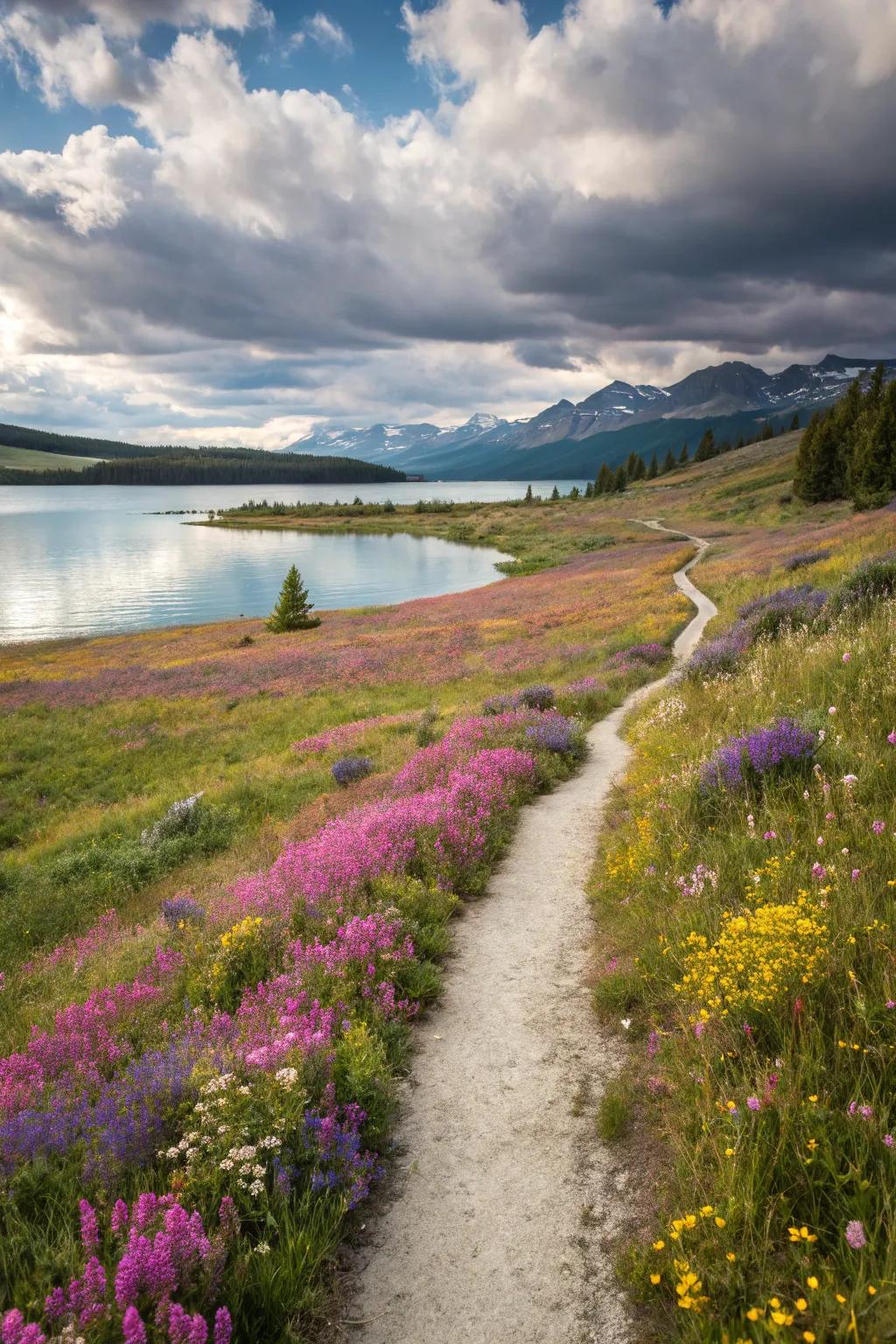
Line pathways with native wildflowers for a pop of color and a touch of whimsy. This approach never fails to make a walk to the water feel like an adventure.
Possibly helpful picks:
- Native Wildflower Seed Mix: Enhance your shoreline pathways with colorful wildflowers. Enjoy vibrant blooms and attract pollinators.
- Garden Path Lighting: Illuminate your wildflower walk with solar-powered lights. Create an enchanting nighttime pathway experience.
- Decorative Garden Edging: Define your wildflower paths with elegant garden edging. Keep plants tidy and paths clear.
17. Fire Pit Gatherings
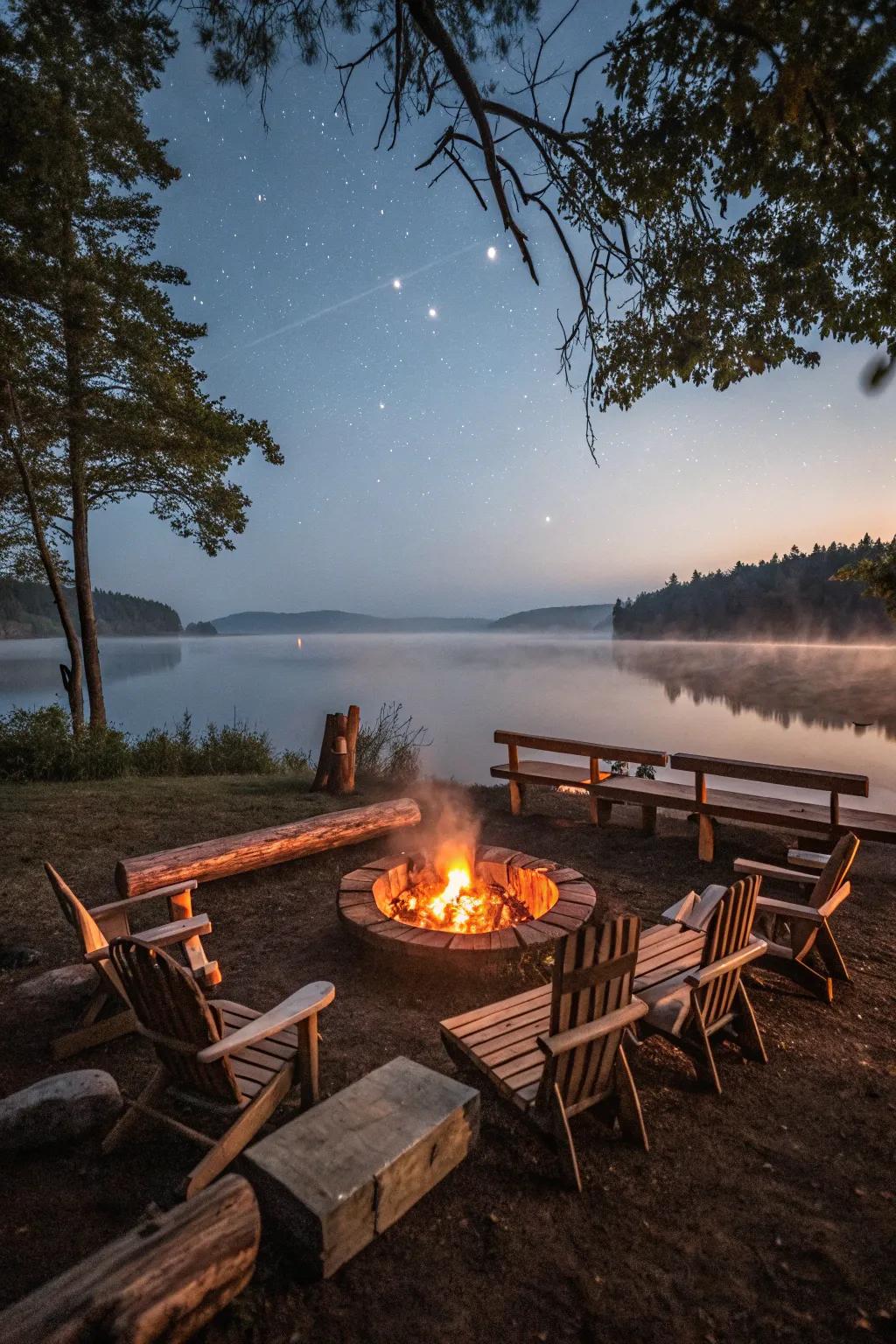
Add a fire pit by the lake for cozy gatherings under the stars. There’s something magical about sharing stories and marshmallows by a crackling fire.
Give these a look:
- Outdoor Fire Pit: Gather by the warmth of a stylish fire pit for cozy lakeside evenings with friends.
- Adirondack Chairs Set: Relax in comfort with durable Adirondack chairs, perfect for lakeside gatherings around the fire.
- Fire Pit Tool Set: Keep your fire pit safe and well-maintained with essential fire pit tools for easy handling.
18. Beach Elements
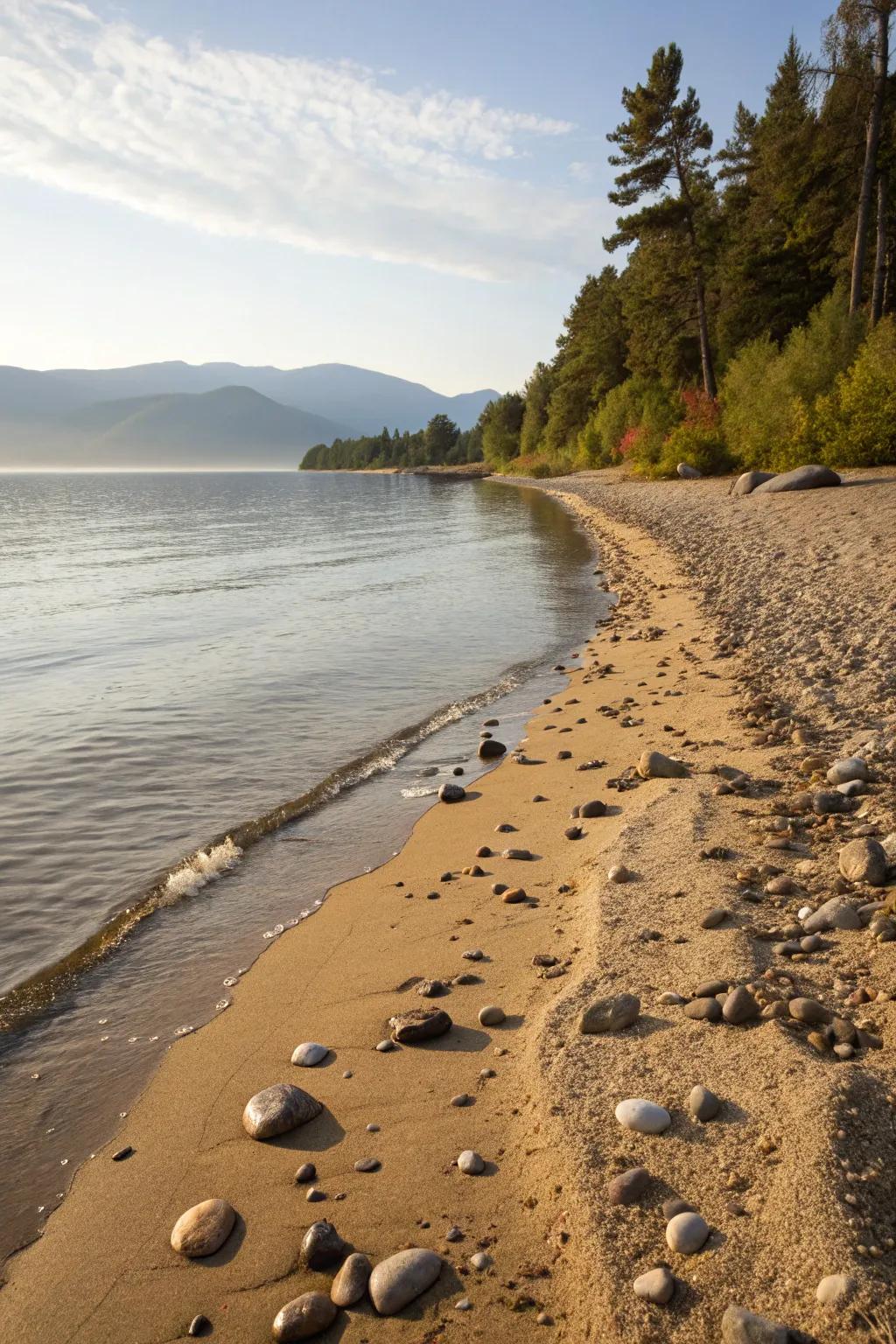
Create a mini paradise with sandy or pebbly beaches for that authentic lakeside feel. I love the idea of a small sandy patch where you can kick back and feel the grains between your toes.
A few helpful options:
- Decorative Beach Pebbles: Enhance your lakeside retreat with decorative pebbles, perfect for adding natural beauty and texture.
- Beach Sand: Create your mini paradise by adding soft beach sand for a relaxing, authentic shoreline experience.
- Outdoor Lounge Chairs: Relax in style by the lakeside with comfortable outdoor lounge chairs designed for durability.
19. Shoreline Stabilization

Plant native trees and shrubs to stabilize soil and reduce erosion. These plants have helped my projects withstand the test of time and elements.
Try these:
- Native Tree Seedlings: Plant native tree seedlings to enhance shoreline stability and natural beauty of your landscape.
- Erosion Control Fabric: Use erosion control fabric to protect soil and encourage plant growth along the shoreline.
- Shrub Planting Kit: Get a shrub planting kit to effectively plant native shrubs for soil stabilization.
